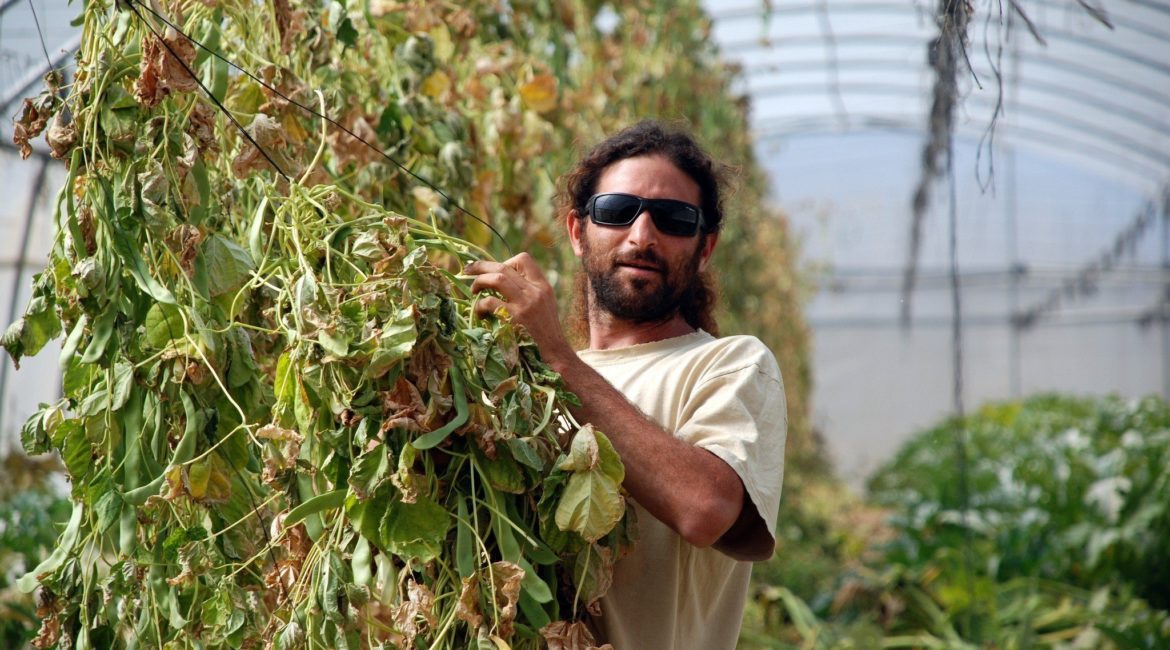Agriculture is facing new and severe challenges in its own right (see box 1.1). With rising food prices that have pushed over 40 million people into poverty since 2010, more effective interventions are essential in agriculture (World Bank 2011). The growing global population, expected to hit 9 billion by 2050, has heightened the demand for food and placed pressure on already-fragile resources. Feeding that population will require a 70 percent increase in food production (FAO 2009).

Tech Innovation that will help improve farmers conditions
The Farmers who succeed are the one who are going to incorporate technology.
#1 – In India Mobile APP are transforming agriculture
Indian farmers have limited access to education and basic crop information kept many farmers locked in a cycle of low productivity and poverty. To combat this situation—and capitalize on the fact that India, a nation with 1.2 billion citizens, now has almost a billion mobile subscribers Vijayaragavan Viswanathan has developped SmartAgriFood
Read more here
#2- Icow
iCow is an Agricultural Information Service with a variety of products available as a subscription service through *285# to help farmers enhance productivity. Read more here
#3 – A farm where cows milk themselves : What happens when bovine and robotic meet?
Rickeen Farms in wallenstein, ontario. The Shants family has been farming since 1912. With the help of technology, the family uses two robotic machines to milk their cows without lifting a finger. If something goes wrong, the machine sends a notification to Rick and Doreen’s smartphone. Read more here
#4 – Robot run Farm

A Japanese company is to open the world’s first “robot farm”, as agriculture joins other sectors of the economy in attempting to fill labour shortages created by the country’s rapidly ageing population. Almost all the tasks of the farm are going to be carry out by robots. The innovation will boost production from 21,000 lettuces a day to 50,000 a day, the firm said, adding that it planned to raise that figure to half a million lettuces daily within five years.
Read more here
#6 – Esoko
It links farmers to markets with automatic market prices and offers from buyers, disseminate personalized extension messages based on crop & location, and manages extension officers and lead farmers with SMS messaging. Read more here
#6 Agricultural Drones

Relatively cheap drones with advanced sensors and imaging capabilities are giving farmers new ways to increase yields and reduce crop damage. What “drones” means to the growing number of farmers is simply a low-cost aerial camera platform: either miniature fixed-wing airplanes or, more commonly, quadcopters and other multibladed small helicopters. These aircraft are equipped with an autopilot using GPS and a standard point-and-shoot camera controlled by the autopilot; software on the ground can stitch aerial shots into a high-resolution mosaic map. Read more here
#7 – A smart sensor to help farmers to save water in a drought
“Land is not uniform. Different amounts of water need to be applied to different parts of the field,” says CEO Isaac Bentwich. “By watering fields uniformly you’re wasting water and poisoning the soil because the chemicals follow the water.” Read more here
#8 – Data driven agriculture
Resson Aerospace delivers customized precision agriculture solutions for large corporate clients. The company has developed drone-based crop monitoring to know when fields need to be sprayed or watered.

Winnipeg-based Farmers Edge use cloud computing to crunch numbers from soil sensors, satellite imagery, weather stations and other inputs to make farms more efficient. « The next big revolution in agriculture is big data, » said Barnes from southern Russia, where he was setting up another satellite office for the company now operating on four continents. Read more here
How technology will change agriculture?
Sheena Swirlz – Concordia Greenhouse
Technology will impact agriculture in the future in many ways. One major way is through hydroponic growing systems which will incorporate sensors to regulate the ideal heating, lighting and moisture for an enclosed growing system. There are already models for small and large scale hydroponic grow rooms which incorporate technological controls, even to the extent of being able to control the environment by phone app. Learn more about the Greenhouse
